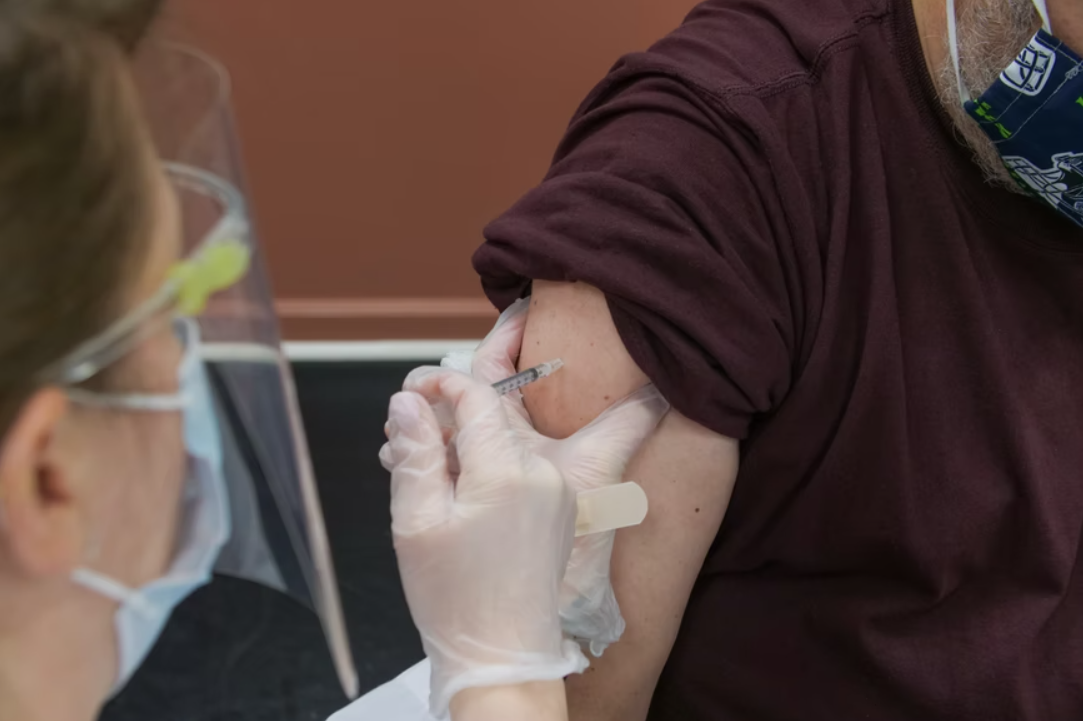On September 9, 2021, President Biden directed the Department of Labor’s Occupational Safety and Health Administration (OSHA) to develop an Emergency Temporary Standard (ETS), requiring all employers with 100 or more employees to ensure that every employee in the workplace is fully vaccinated.
This standard also requires unvaccinated dental workers to produce a weekly negative test result. Further details and a compliance timeline have not yet been released.
Aside from a given area’s COVID numbers over the summer, in-office teams remain at risk of contracting and spreading COVID-19 going into the fall and winter seasons. Government and practice owners face challenging obstacles and decisions meanwhile tensions have been building between people with opposing views of topics related to masks, vaccines, and quarantines. Similar disagreements may have become apparent in your office. Whether produced internally or by the government, vaccination mandates may intensify these conflicts.
Let’s take a look at some effective, no-nonsense ways to prevent vaccine-related conflict in the workplace:
Recommended Reading
COVID-19 Resources for Employers
Step 1: Be Aware of Changing Perspectives and Potential Conflicts
As the pandemic continues to bring about change, challenges and conflicts abound — particularly in the workplace, so remain aware of changes in perspectives and behaviors. The latest decisions have been influenced by circumstances surrounding the impact of COVID-19 variants (e.g. the Delta variant), as well as disagreements about the government’s role in public health.
As full FDA approvals are being granted, those initially opposed to getting vaccinated are beginning to change their minds, and early adopters are considering booster shots and children’s vaccinations. Additionally, though the factors are varied, some remain firm in their opposition to this vaccine (or vaccines in general). The situation is still evolving, and conflict continues to spill over into the workplace, impacting employee behaviors and relationships. These sorts of ideological divides do not contribute to a thriving and productive workplace. The most prudent step you can take as a leader in this context is to set firm guidelines around your employees’ cooperative behavior — and in a way that transcends such divides.
Step 2: Empower Team Leaders to Defuse Conflict
Take a stance towards proactively preparing supervisors and managers to recognize and deal with COVID-19 conflicts among employees. These conflicts can be both disruptive and costly from a productivity standpoint for the organization. Provide staff with resources on how to recognize and effectively deal with conflict between coworkers. Doing so will help promote a workplace culture characterized by productivity and civility alike.
Resources can include a combination of coaching, training, job aids, and individualized support. Remind the management team to set an example by avoiding judgmental conversations with employees about COVID-19 vaccines, creating a safe space for open dialogue with leadership, and engaging in other prevention-related practices. Also clarify that some circumstances have employment law compliance implications (e.g. disability and religious accommodations).
Above all, firmly remind employees that discussing personal medical information (such as vaccinations) violates HIPAA regulations. Such behavior especially has no place in a professional medical setting!
Step 3: Generate Solutions Through Brainstorming Sessions
Generate ideas about how best to defuse employee conflicts related to COVID-19 vaccines and related topics by brainstorming with supervisors. The key is to encourage supervisors to look at the problem behaviors and determine what workplace policies or practices these behaviors violate, so they can keep emotion out of handling the situation.

Encourage them to come up with their own solutions in addition to the following suggestions:
- Redirect or Refocus Employees – If employees argue about vaccines or related topics, redirect them by explaining that everyone has different ideas, but that work is not the place to discuss or ask questions about personal matters. This is also a great time to bring up guidelines regarding HIPAA. Vaccination status is, by nature, Protected Health Information.
- Warn or Discipline Employees – If employees engage in harassment*, negative comments, forcing beliefs on others, or name-calling, advise them that such communication is unprofessional and/or a violation of the code of conduct and HIPAA. Follow disciplinary procedures and document the incident as you would any other similar violation.
* claims of harassment by employees should be taken seriously, be addressed with urgency and should be properly investigated
Step 4: Provide Employees With Vaccine Resource Guide
Create a practical, hands-on guide that supervisors and managers can consult either as a printed document or digital document available on the company intranet. It can serve as an addendum to your handbook. Use the solutions gained during the brainstorming to prepare supervisors to address conflicts related to COVID-19 vaccines. When coaching managers individually, use the guide to reinforce how they can use it to educate their employees and to demonstrate transparency on the topic. The guide should include the following:
- Basic facts about COVID-19 vaccinations
- A brief overview of the available COVID-19 vaccines that is objective, unbiased and based on science
- Sources for all information provided (e.g., CDC) to be updated as new facts become available
- Ways for employees to get more information from official sources (e.g., links to federal, state, or local health authority websites)
- Company’s official COVID-19 policy, including information on vaccine requirements, mask policy, and notification requirements, if available
Keep up with the latest mask and vaccine updates.
Step 5: Generate a COVID-19 Vaccination Policy

Now that the Food and Drug Administration (FDA) is granting formal approval to COVID-19 vaccines, more companies are implementing policies. These policies may require workers to be vaccinated. However, these policies can be overridden by state and local laws, or by corporate policies that govern privately held property.. The current position of the federal Equal Employment Opportunity Commission (EEOC) is that employers may opt to require employees to be vaccinated against COVID-19, as long as such a requirement does not result in disparate impact or any other form of unlawful discrimination.
Also note that several states and localities require that employees in certain industries and/or settings be fully vaccinated — and in some cases, there are opportunities to undergo regular testing as an alternative to getting vaccinated, and this would be an option for employees with a qualifying medical or religious exemption.
It’s important to develop a policy and/or set of guidelines that clearly outline the company’s expectations , including any requirements or special policies that apply. Employers who want to require COVID-19 vaccines should be prepared to handle employee requests for an accommodation due to a disability or religious belief exemption under federal law (e.g., Americans with Disabilities Act (ADA) and Title VII of the Civil Rights Act of 1964 (Title VII), as well as state and local law.
If you’re undecided about vaccine requirements for employees, consider consulting legal counsel for guidance regarding which course of action might best meet your organization’s needs. If you need help putting the document together, you can use our policy guide and declination forms.
Step 6: Address Conflicts to Prevent Harassment and Discrimination

Efficiently address all workplace conflicts related to COVID-19 vaccines to prevent claims of a hostile work environment. As with supervisors, employees must be made aware that workplace policies addressing harassment and discrimination cover hostile employee interactions related to COVID-19 vaccinations.
Practices must ensure that they address any complaints quickly and efficiently, and ensure that measures must be taken to investigate those complaints. Employees may be unaware of all the details of their coworkers’ situation so these interactions should be handled with sensitivity and care to ensure that employees do not share protected information. Supervisors should take disciplinary measures and document any COVID-19-related argument considered a violation of the company’s discrimination / harassment policies, or the company’s code of conduct. Be sure to treat each incident consistently and uniformly, so as not to give rise to allegations of favoritism or unfair treatment.
Step 7: Empower Managers to Lead Teams Through the Pandemic
Generate a plan that prepares your organization’s management team to effectively lead your employees during these challenging times. With so much uncertainty and change surrounding the COVID-19 pandemic, it’s only natural for conflicts to occur. Although conflict isn’t necessarily a negative thing, the way it’s handled determines whether it’s destructive or constructive. Apply these steps to help ensure the most constructive outcomes possible.
Additional Resources
- COVID Vaccine Declination Form
- COVID Policy Templates
- COVID Employer Toolkit
- Re-Opening Your Practice After COVID
- 7 Termination Mistakes Infographic


